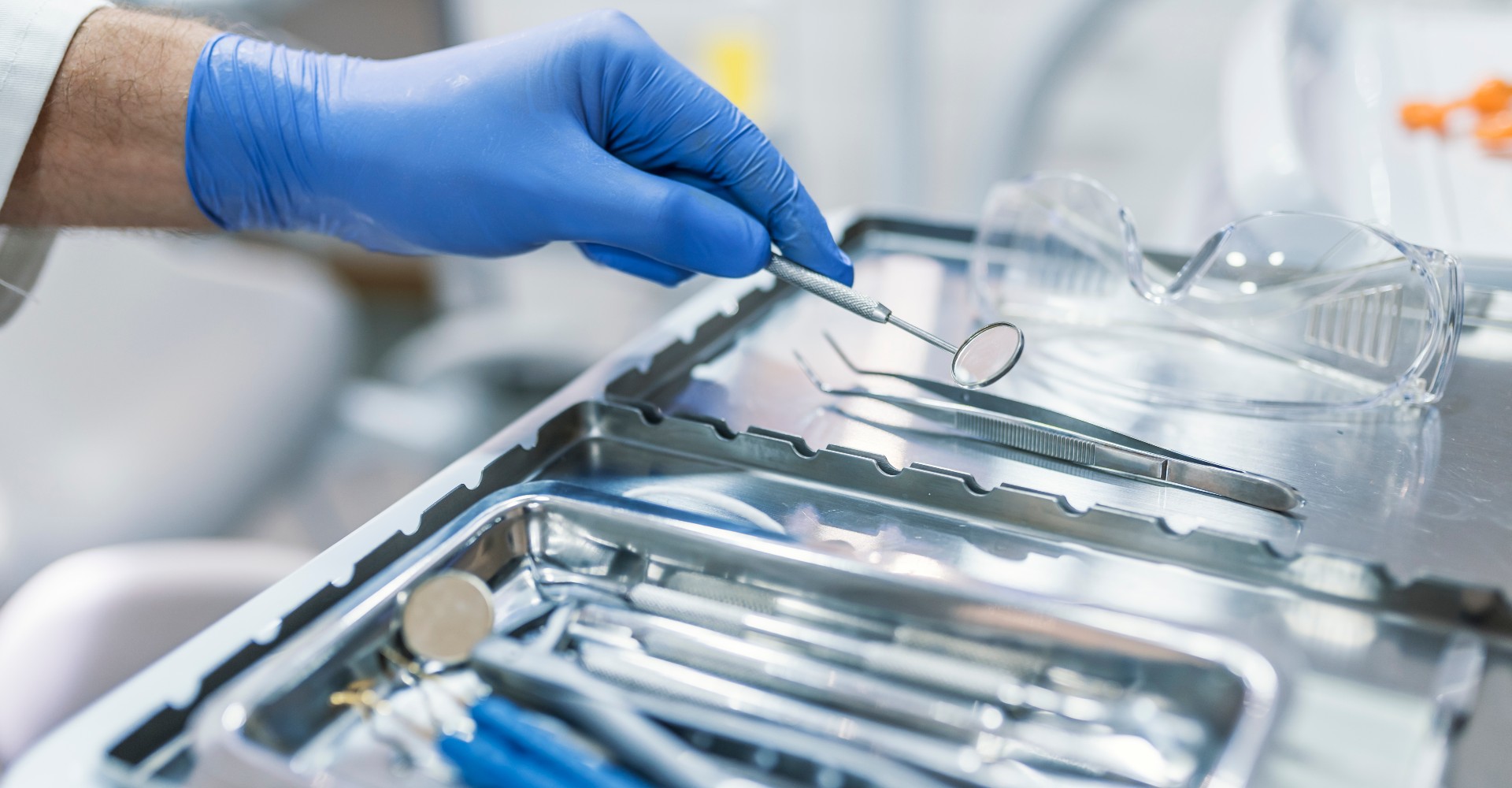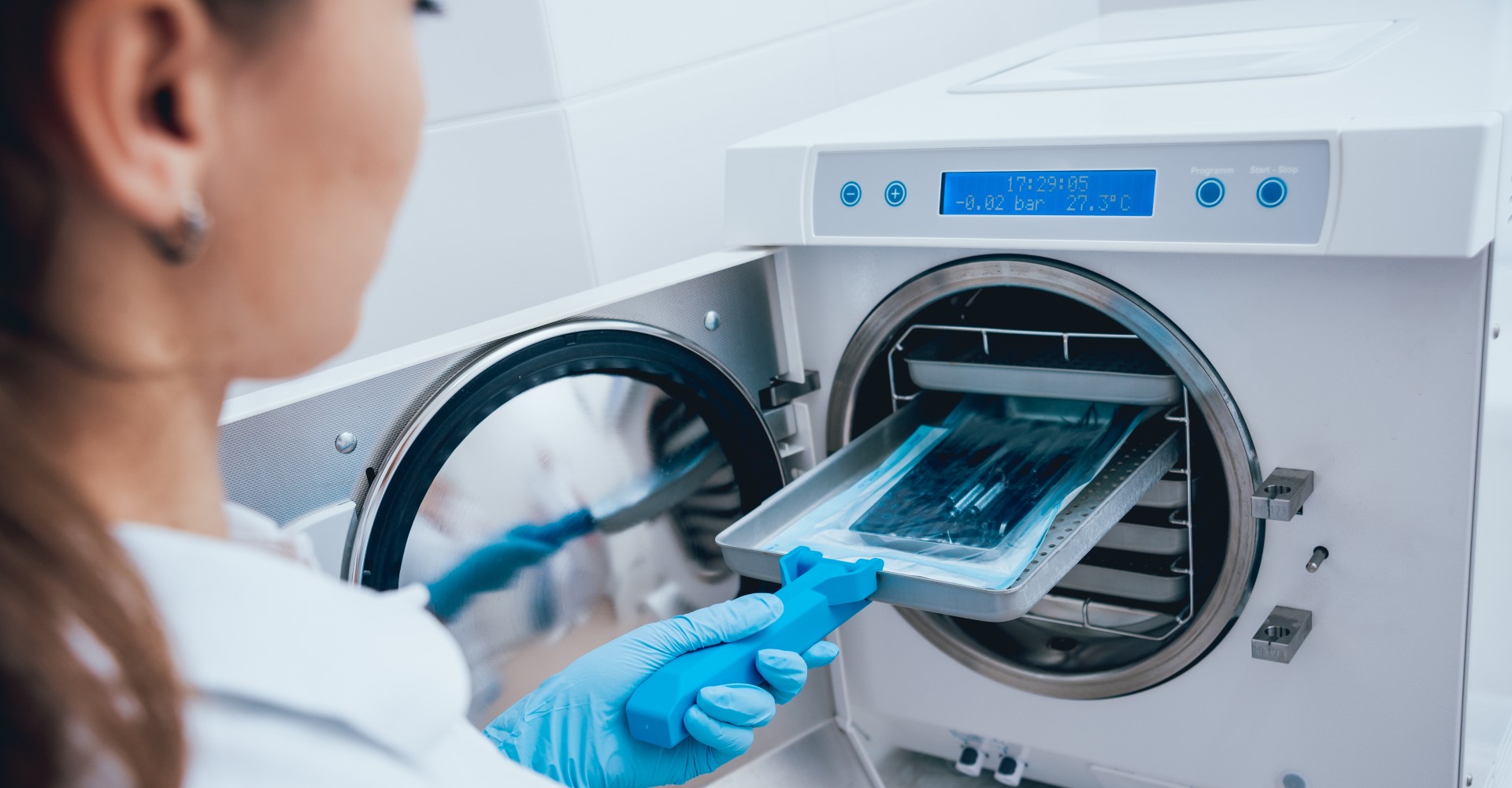
13 Oct Understanding the Most Common Dental Office Infection Control Breaches (And How to Avoid Them)
Thoroughly understanding infection control and how these breaches happen can help to avoid them in dental clinics. Unfortunately, common issues like improper hand hygiene and contaminated dental unit water lines can be the origin of an infection control breach. Whatever the source of the breach, dental clinics must address the issue right away so that patients are not affected. Some of the most common dental office infection control breaches, which are outlined in detail below, include:
- Hand Hygiene
- Handpiece Sterilization
- Proper instrument cleaning and sterilization
- Dental Unit Waterlines
What Is an Infection Control Breach?
The importance of infection control should be taken seriously by any healthcare facility, especially dental clinics. An infection control breach can occur when infection control procedures are not followed. It is a significant threat to the health and safety of patients when a breach occurs because it could lead to a healthcare-associated infection.
In some cases, an infection can lead to multiple surgeries and affect a patient’s life for a long time as demonstrated with the post-pulpotomy Mycobacterium abscessus infections that were alluded to earlier. To keep all patients safe and unaffected, proper infection control protocols must be in place and followed correctly with each patient.
Most Common Dental Office Infection Control Breaches
Within dental clinics, there are a handful of common instances where infection control breaches occur. Some of these common causes are surprising because they may not be visible. However, understanding how each of these infection control breaches happens ensures that your dental clinic can avoid them. Having open communication with your staff is another way to keep patients safe. When all staff know and follow the infection control protocols, your clinic will run smoothly without breaches.
Hand Hygiene
Hand washing is one of the best ways to prevent the transmission of infection in dental offices and other healthcare facilities. When staff properly follow hand hygiene procedures, the risk to patients is reduced. Despite how easy it is to clean your hands, it is still one of the major causes of infection control breaches due to lack of time and forgetfulness. Other issues that can lead to improper hand hygiene include:
- Lack of time
- Poor staffing
- Overcrowding
- Perception that hand hygiene interferes with the patient relationship
- Lack of convincing evidence that hand hygiene decreases infections
- Forgetfulness
- No role model from colleagues or superiors
- Hand hygiene supplies that aren’t easily accessible (e.g., alcohol based hand rub in hallways but not in operatories)
Another issue that often causes a significant lack of hand hygiene is dry skin in the winter. With dentists and technicians washing their hands upwards of 100 times a day, skin can become dry and cracked in the winter. Unfortunately, wearing gloves is not a substitute for handwashing. You may be able to get by using lotion more regularly in the winter months, as long as you are still correctly washing your hands whenever necessary under infection control protocol. Generally, most dental practices don’t provide hand lotion for staff use. Under these circumstances, it is best to apply your favorite hand lotion at home. Don’t bring personal hand lotions to work since some hand lotions may interfere with the effectiveness of gloves or hand sanitizer.
Patient Care Equipment Cleaning and Disinfection
To avoid infection control breaches in general, your clinic will need to clean patient care equipment thoroughly. Of course, there are different cleaning methods for different devices, which is why an infection control plan is so important. Properly outlining cleaning and disinfection processes ensures that all the staff is on the same page about how and when to clean patient care equipment. The best way to make sure equipment is cleaned and disinfected correctly is to follow the steps below. For items that do not enter the patient’s mouth (e.g., apex locator machine):
- Make a list of all disinfectant sprays and wipes in the facility and compare those to the equipment manufacturer’s recommended products.
- If the disinfectants used at your facility are different from those recommended in the owner’s manual, contact the equipment manufacturer to learn more.
- Develop policies for cleaning based on the equipment and disinfectant manufacturers’ recommendations.
- Indicate the responsible party for each piece of equipment.
- Educate those responsible for cleaning the equipment using the policy.
- Conduct observations of equipment cleaning to ensure the practice matches policy.
- Provide immediate feedback if a violation is noticed and work with staff to determine any obstacles to performing the process, as indicated in the policy.
Handpiece Sterilization
One common cause of dental office breaks in infection control is handpiece sterilization. Properly cleaning and sanitizing dental tools is an essential step in preventing infections at your dental clinic. The handpiece is often overlooked in the sterilization process because clean replacements are put on without the whole piece being sterilized. This is a massive problem because bacteria can get down into the motor. So even if handpiece sterilization seems complicated, it’s recommended by the CDC and a vital part of preventing infection control breaches in dental offices.
Proper Processing
Not only are handpieces a culprit of infection control breaches, but so is improper instrument cleaning and sterilization. If the sterilizer in your dental clinic is not being utilized properly, it is almost as ineffective as not sterilizing the tools at all. Items should not be removed from the sterilizer until they are completely dry and the drying cycle has ended. If packages are removed too early or when hot, they can wick bacteria when they contact surfaces, hands, or whatever is transferring them to storage.
A sterilization cycle, including drying time can be close to an hour, so ensure your clinic has ample time for sterilization so that your tools are not at risk of causing an infection control breach. To avoid problems which can endanger patients, follow the instructions in the sterilizer owner’s manual for loading, maintenance, and running cycles.
Waterlines
Unfortunately, waterlines in dental clinics are another common source of infection control breaches. Dental unit waterlines consist of any line or tube connected to the dental unit or chair. The water runs through instruments and into the patient’s mouth. Many studies have shown that dental waterlines can become a breeding ground for bacteria, fungi, and protozoa, which form a layer on the internal channel of waterlines. This is called “biofilm” and can be challenging to remove.
Recently the FDA published guidance on dental waterlines, outlining policies for the water quality and how to disinfect these lines and tubes properly. Ensuring waterlines deliver safe and clean water to patients is essential to avoiding infection control breaches at your dental office.
Avoiding Dental Office Infection Control Breaches
By thoroughly understanding how infection control breaches can occur, you can avoid them in your dental office. Having proper infection control procedures in place and communicating with staff ensures that infection prevention remains top of mind each day. Focusing on common infection control breaches like hand hygiene, sterilization, and waterlines will help your dental clinic remain free of infection. There is nothing more important than patient safety. With the proper infection control measures, you can provide excellent dental care, free from infection risks.
To find out more about dental pediatric outbreaks:
Singh, J., O’Donnell, K., Adler-Shohet, F.C., Arieta, A.C., Ashouri, N., Ahuja, G., et al. (2021). Invasive Mycobacterium abscessus outbreak at a pediatric dental clinic. Open Forum Infectious Diseases, 8(6), ofab165. http://doi.org/10.10393/ofid/ofab165.
Peralta, G., Tobin-D’Angelo, M., Parham A., et al. Notes from the Field. Mycobacterium Abscessus infections Among Patients of a pediatric dentistry practice – Georgia, 2015. MMWR Mob MOral Wkly Rep 2016; 65:355-356. DOI: http://dx.doi.org/10.15585/mmwr.mm6513a5

